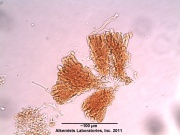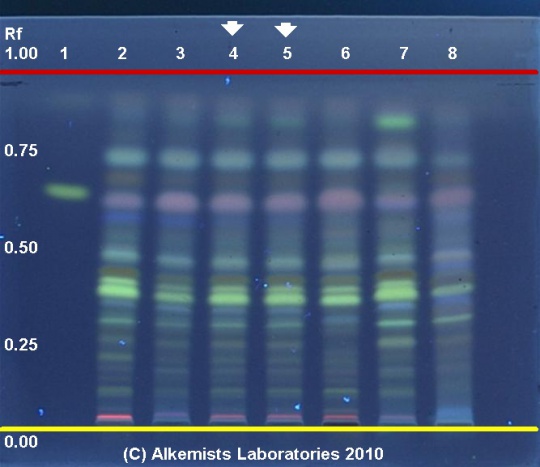Ganoderma lucidum (fruiting body)
Contents |
Nomenclature
Ganoderma lucidum (Curtis: Fr.) P. Karst. Ganodermataceae
Syn. Polyporus lucidus (Curtis: Fr.) Fr.
Standardized common name (English): reishi
Pinyin name(s): ling zhi; ling zhi (fruiting body); ling zhi cao (fruiting body)
Botanical Voucher Specimen
Organoleptic Characteristics
Macroscopic Characteristics
Microscopic Characteristics
|
High Performance Thin Layer Chromatographic Identification
|
Reishi (fruiting body) (Ganoderma lucidum) Lane Assignments Lanes, from left to right (Track, Volume, Sample):
Reference materials used here have been authenticated by macroscopic, microscopic &/or TLC studies according to the reference source cited below held at Alkemists Laboratories, Costa Mesa, CA. Stationary Phase Silica gel 60, F254, 10 x 10 cm HPTLC plates Mobile Phase Dichloromethane : Methanol [9/1] Sample Preparation Method 0.3g+3mL 70% grain EtOH sonicate/heat @ 50° C ~ 1/2 hr Detection Method 10% Methanolic H2SO4 -> UV 365 nm Reference see American Herbal Pharmacopoeia & Therapeutic Compendium
|
Supplementary Information
Sources
- ↑ Elan M. Sudberg, Alkemist Laboratories http://www.Alkemist.com
- ↑ Elan M. Sudberg, Alkemist Laboratories http://www.alkemist.com


